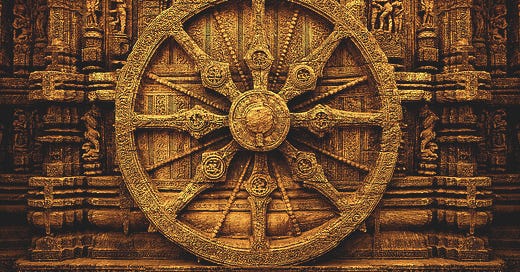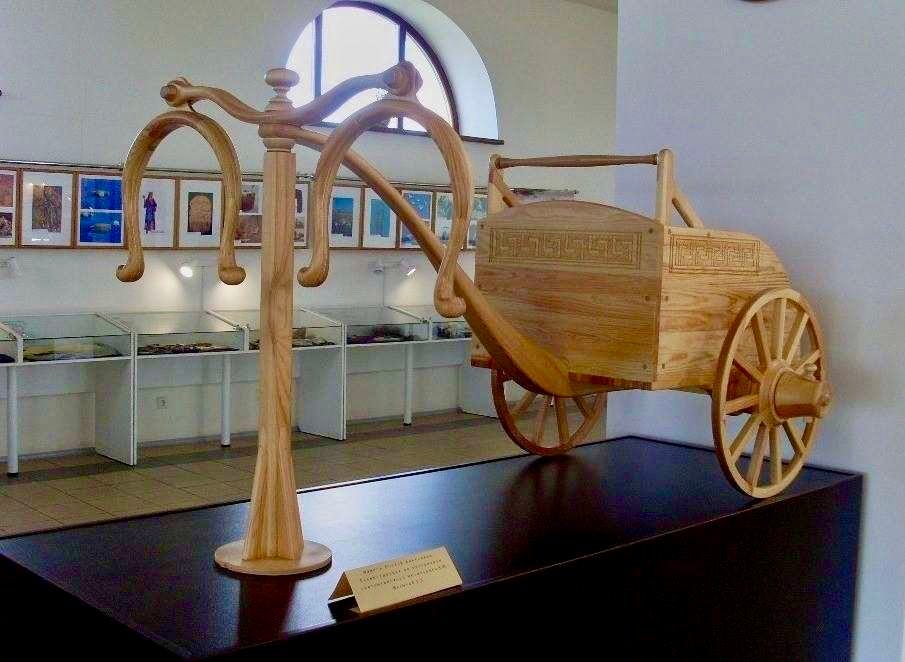Few words have ever generated enough disdain to ever enter the realm of the strictly forboden, the forbidden, yet there exists a list of a magnificient few. The aryan, the word that conjures up images of the deadliest conflict known to man’s history, the same word that conjures up images of a blond beast unleashed upon the world and seizing what is in his power has a history far beyond modern times.
The etymological roots of Aryan finds itself in our ancient past, far into the steppes of Eurasia with the proto Indo-Europeans. Here the word found its ancient use to designate the nobleman, the leader of the freemen that held power over their captives. Here the term Aryan was strictly of a hierarchical term to refer to the class of one’s status. These noblemen were the ruling class, the subjugators of men, the aristocracy of the steppe and of their own people.
As time marched forward and the loosely connected culture of warbands spread out from the pontic-caspian steppe, there came several new daughter cultures, ones that would inherit the spirit of the proto-Indo-Europeans and form their own rites and culture. Of those groups that broke away eventually came the Sintashta culture, or what linguists may call the proto-Indo-Iranians. These men for the first time in the Indo-European tradition broke away, altering the term Aryan from its classical meaning, and brought it to refer to their own people. This endonym, a name which refers to a group that originates from within the group, as opposed to an exonym, a name which refers to a group that originates from another group, explicitly tied the old meanings of nobility to one’s birth, or more accurately, their tribe.
It is from these proto-Indo-Iranians, these Aryans that the first oral traditions of the oldest Vedas find their genesis. Here a new heirarchy arose from even older heirarchies, and the Aryans began to spread. It is also here in the heart of the central steppe south of the Urals that the Aryans invented the first chariots. These chariots revolutionized warfare, the same way that the horse revolution the previous generation of warfare, and now armed with the highest technology of the bronze age, these pastoralists of the steppe brought with them their religion, their culture, their technology, and their blood, descending south.
From studies of the remains of the pastoralists we can know what these men looked like. Approximately slightly less than half of the burials were blond. A similar percentage of these skeletal remains reveal genetic evidence of blue eyed beings. This makes sense as several of their Iranic descendants later on were recorded as such by the likes of Herodotus and several other Greeks, as well as the Indians who first witnessed the Vedic invasions, showing their affinity for regions far north of where they once called home.
These people were tall, robust, heavily bearded men, subsisting primarily off of the cattle they brought with them, showing a high lactose tolerance. It is with the nourishment of milk and meat that these men were able to overpower many people, often outnumbering them and with strongly fortified cities.
These Aryans were strong warrior-kings, clashing clans of the highest order. It is on the fringes of the steppe and the beginning of the plateaus that the Aryan name became legendary, destroying and replacing the existing cultures they came across in modern day Iran and eventually the Indian subcontinent. These warring pastoralists were immense in both size and strength compared to the malnourished farmers they crushed beneath their mighty chariots. With a small ruling class, these Aryans placed themselves at the height of the newest heirarchy, the caste system.
The reverberations of the caste system can be felt until this very day, often distinguishing someone with higher levels of Aryan heritage by their surname alone in areas of India, Pakistan, several Iranic countries. Today, the only people which still refer to themselves as Aryans find themselves from these countries, however, even though they may be the direct descendants of the Aryans, they themselves are not the closest genetic relatives of the Aryans. Those that have the highest genetic affinity to those bronze age warrior-kings that conquered the steppe so many millenia ago find their closest kin in the regions of Scandinavia, the Baltics, and in general Northern Europe. The sister cultures that shared their time with the Sintashta culture can be thanked for these strong ties.
Now we arrive at the modern age, where the word Aryan has become tainted in the eyes of the public. To label one’s self as an Aryan, or rather, as a nobleman would push someone beyond redemption in the view of the many. Who can call themselves Aryans, the men who have direct lineage to the original Aryans, the men who share the highest affinity for their blood, perhaps someone else not yet mentioned? There shall one day come an age, an age where men rise above what is forbidden. In that time there shall come a group of men, like the men of the steppe, and with their strength, their beauty, their values, their culture, and their blood, they shall one day show the world a new definition of Aryan, a new warrior-king.







New Hasanlu samples Southern Arc study is death kneel for Sintashta Indo-Iranian theory and for also for spoked wheel theory.
Hansanlu shows Yamanya admixture but not MLBA Sintashta. On golden bowl of Hansanlu you can see chariots with spoked wheel, they have 6 spokes too. Samples were analyzed on this on blog as well -> https://a-genetics.blogspot.com/2022/08/southern-arc-.html
Spoked wheel iconography with 6 spokes from Neolithic SC Asia/Gerdosia region, none of these samples have steppe btw -> https://preview.redd.it/kqm47btep4i71.jpg?auto=webp&s=7fb7d41b82a6e478bf60d1ebf080c0d24634223b
If anything it looks like Sintashta spoked wheels were influenced by something coming from Iran/SC Asia.
people should cope with the fact that the term Arya is used only to refer to the Indo-Iranians and the Indo-Aryans...unless you are a nazi of course.